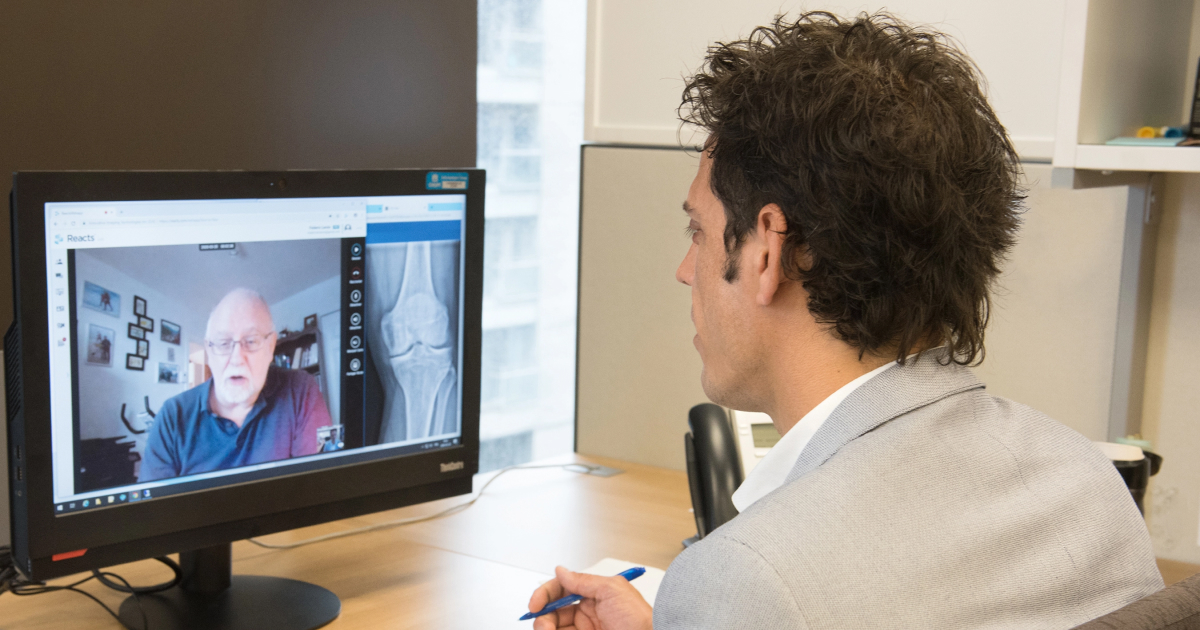Health costs represent a very large proportion of the Quebec government’s budget. In 2021-2022, expenditures allocated to the Ministère de la Santé et des Services sociaux (MSSS) exceeded $54 billion, representing 40% of the province’s total budget. While citizens fund health services through their taxes, it is also important to note that the beneficiaries of these services pay the indirect costs. These include missed work hours to attend appointments, travel, meals and even accommodation in some cases. No wonder the subject of health care costs is so often in the media and in the public eye. We believe that telehealth, already recognized for its advantageous service offer in terms of access to care and services, could save the community money and, at the same time, reduce the carbon footprint!
The CHUM study
The Centre hospitalier de l’Université de Montréal (CHUM) wants to contribute to the quantifying of savings related to the virtual delivery of health services. Therefore, its telehealth activities performance department has set up a matrix with social, economic and ecological components. The institution’s health economist has validated the tool. This matrix shows how telehealth can save money, time and fatigue for people in the institution. This can be done while promoting home care and, of course, without compromising the quality of services!
To accomplish this, a large amount of data was entered into the calculator: postal code, kilometers travelled, average cost per kilometer, cost of meals eaten, number of nights spent in hotels, time lost from work, kilograms of CO² consumed, etc. All of which was weighted by other variables to consider the costs incurred by a person receiving teleconsultation services at home. For example, the cost of the meal taken at home, or the costs to the institution such as the purchase and maintenance of computer servers to provide virtual services.
Figures that speak for themselves
The study conducted in 2022 was based on a sample of 500 people treated at the CHUM sleep clinic. The exercise showed that thanks to teleconsultations, the institution was able to save them nearly $100,000, or an average of $188 per person. Some of them living in more remote areas saved up to $1,000 per consultation! As a bonus, the CHUM and these 500 people have reduced CO2 emissions by 10 tons by choosing telehealth.
If this statistical exercise had been extended to all teleconsultations performed at the CHUM during the 2022 calendar year (8,400 clinical procedures identified), the total savings would have been approximately $1.6 million for patients. This would be equivalent to a reduction of 168 tons of CO², or the annual emissions of approximately 18 motor vehicles! As efforts to deploy telehealth modalities will continue at the CHUM over the next few years, imagine the potential savings when teleconsultation becomes part of the offer of service for all clinics, which offer around 425,000 consultation visits annually…
New arguments for the virtual
This simple CHUM study demonstrates the potential for telehealth to generate direct savings for people using health services across the province. At the same time, this exercise estimated the extent to which virtual service delivery could contribute to the government’s greenhouse gas (GHG) emission reduction targets. In a context where the telehealth service offer is booming, it is interesting to highlight these less documented benefits. It would be advisable to include these beneficial factors in the strategy to encourage more clinical teams and professionals to deploy virtual services, particularly for teleconsultations. However, it is worth noting that telehealth will remain a complementary modality to face-to-face care and services and cannot be applied to all clinical situations. One thing is certain: the CHUM’s Connected Health team will continue to follow this issue closely in order to include the economic and environmental arguments in the work of the members of the Réseau québécois de la télésanté.
Note: The data presented in this article are realistic but can be enhanced. They assume that other elements of the situation will not change significantly. The matrix will be improved with new additions (e.g., time lost by the beneficiary accompanying the person admitted to the CHUM).
Last update: July 18, 2024
